South Carolina Hash over Rice
Y’all, let me introduce you to one of the South’s best-kept culinary secrets! South Carolina Hash isn’t your average breakfast hash—it’s a rich, deeply savory meat gravy that’s been bringing folks together at barbecue joints, family gatherings, and church socials for generations. One spoonful over hot rice and you’ll understand why South Carolinians guard their hash recipes like treasure.
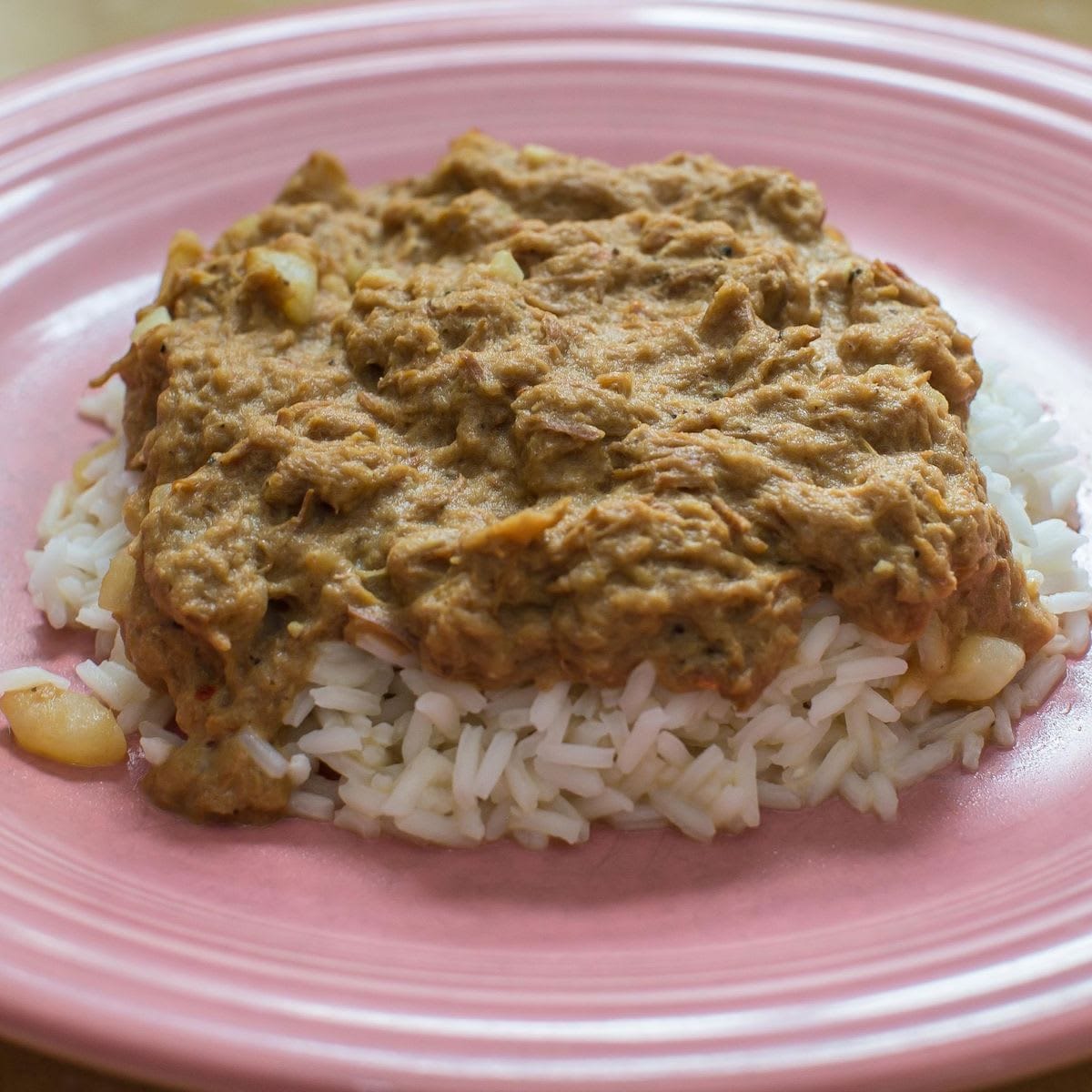
This slow-simmered combination of pork, potatoes, and bold seasonings creates something magical—a thick, velvety concoction with a tangy kick from mustard and vinegar that’ll make your taste buds stand at attention. What makes this dish truly special is how it transforms humble ingredients into something extraordinary through the patience of slow cooking. The result is comfort food that sticks to your ribs and your memories.
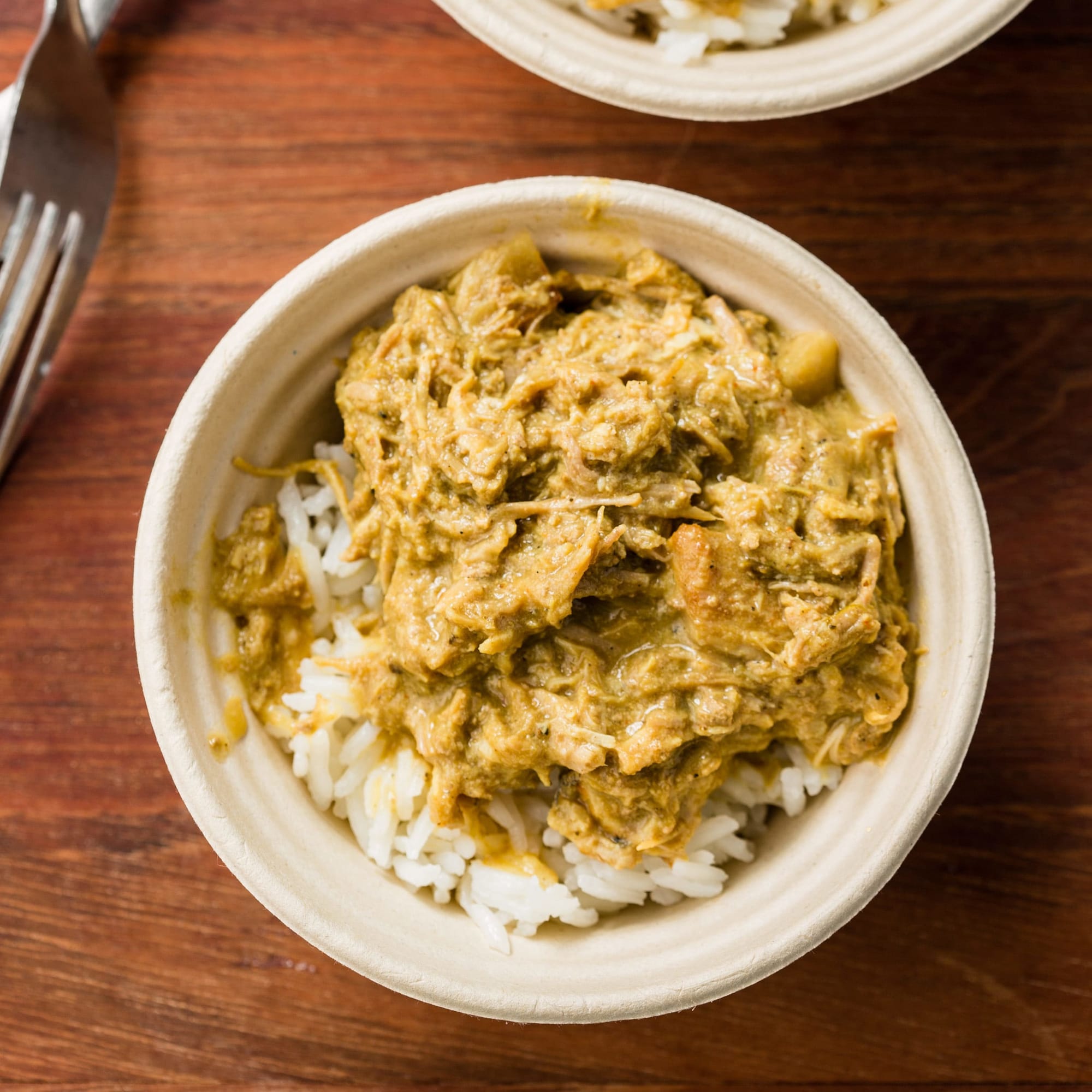
Ingredients
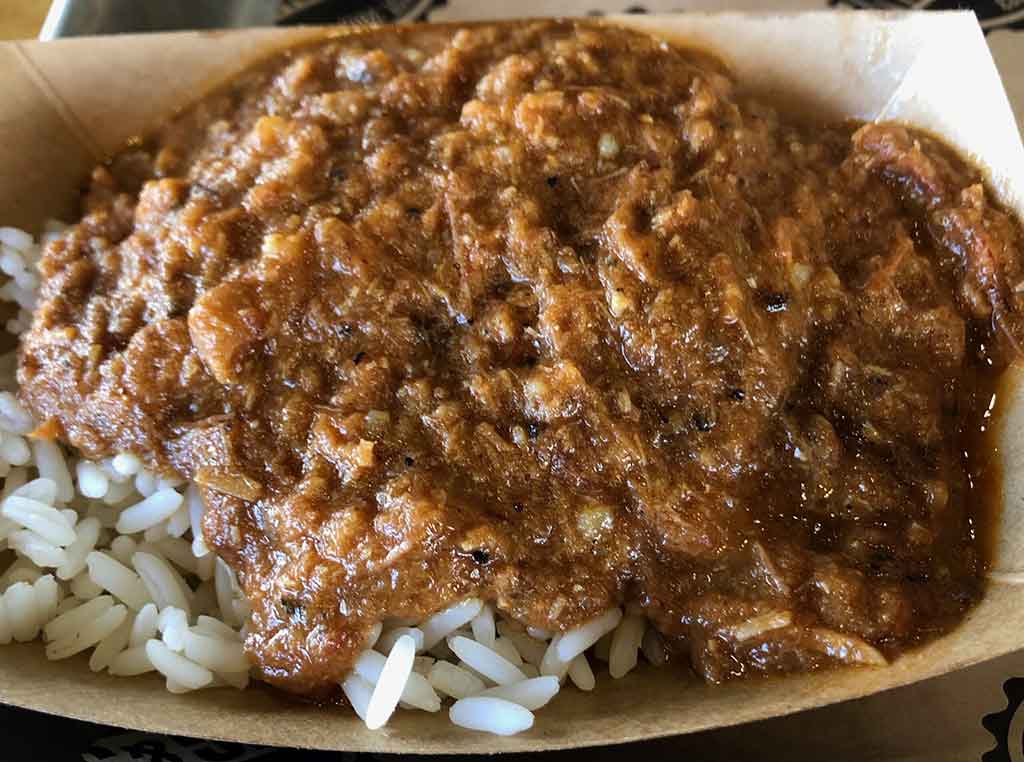
For the hash base:
- 5 pounds pork shoulder/Boston butt
- 2 pounds onions, peeled and chopped coarsely
- 1 pound potatoes, peeled and cut into small dice
- Water to cover
For the seasoning:
- 1 cup cider vinegar
- 9 ounces yellow mustard
- 1 tablespoon salt
- 2 tablespoons black pepper
- 1 teaspoon red pepper flakes
- 8 tablespoons unsalted butter
For serving:
- Cooked white rice
- Optional: greens, coleslaw, or toasted buns
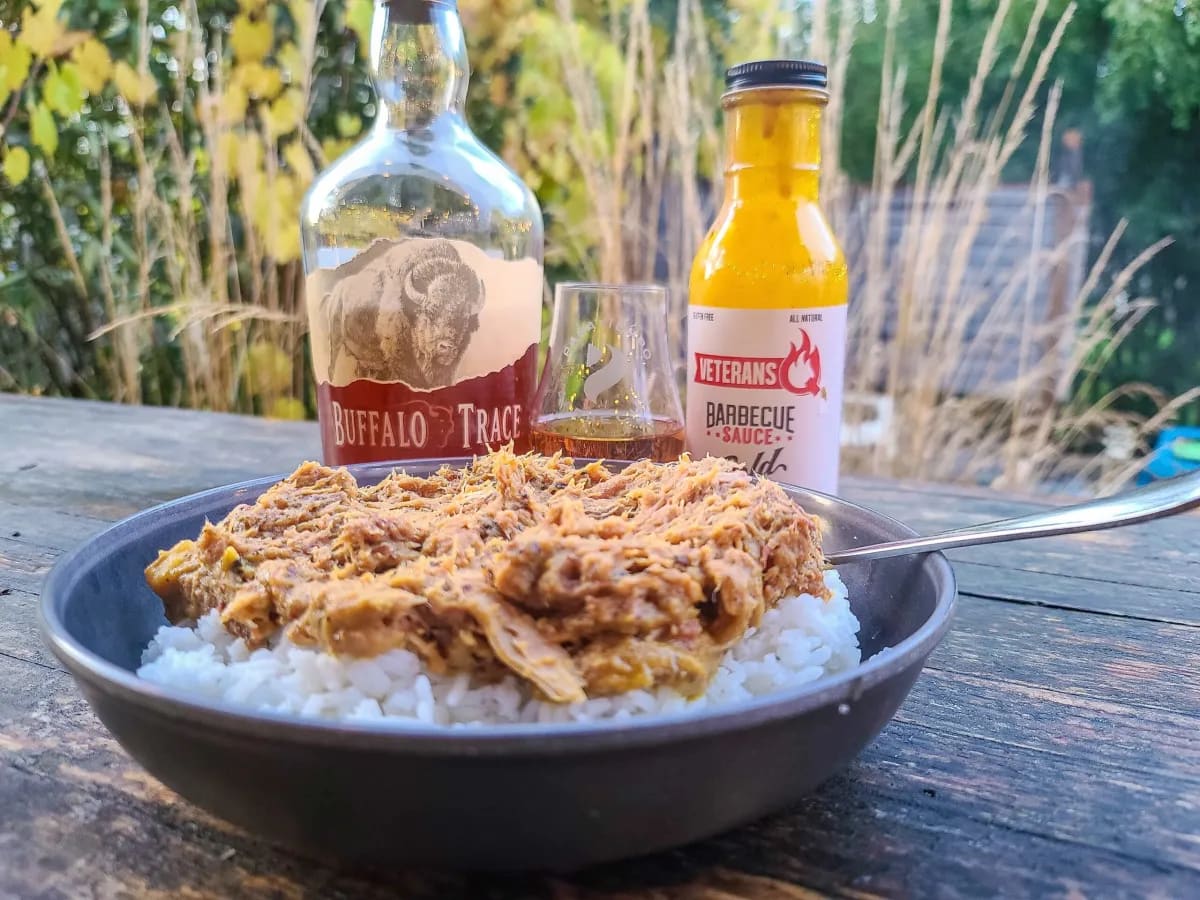
Steps
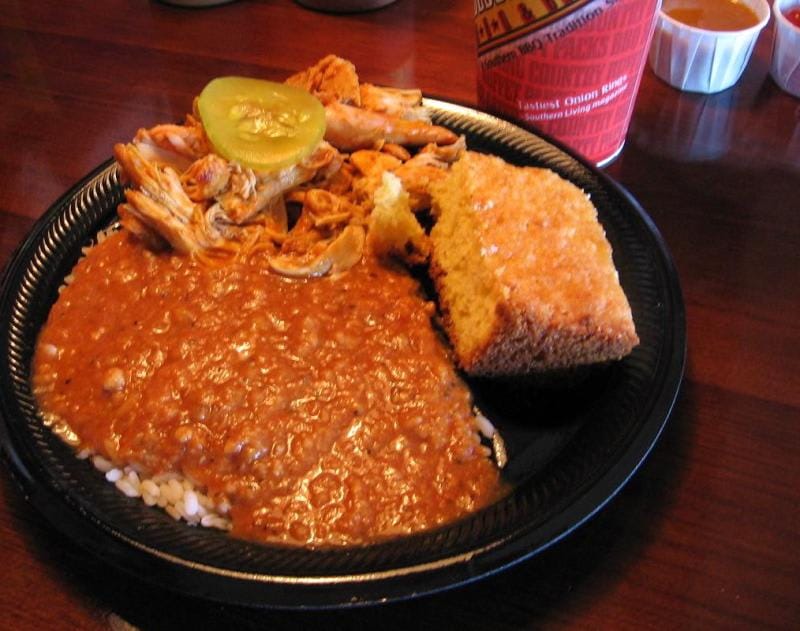
- Cut pork into 2-inch pieces. If your cut includes bones, keep them for extra flavor—they’ll be removed later. This size allows the meat to cook thoroughly while retaining moisture during the long cooking process.
- Place pork in a large pot and cover with cold water by 2 inches. Bring to a rolling boil for 3 minutes. This initial boil helps remove impurities that would otherwise cloud your hash.
- Drain the meat completely, discarding the water. Rinse the meat under cold water to remove any remaining grey blood residue. This cleaning step is crucial for achieving a clean flavor in the final dish.
- Return the cleaned meat to a pressure cooker and add fresh water to cover by 2 inches. Secure the lid, bring to pressure, and cook for 20 minutes. The pressure cooking tenderizes the tough shoulder cut in a fraction of the time traditional methods would require.
- Carefully release pressure according to your cooker’s instructions. Remove and discard bones, but keep all the meat. Add the chopped onions, secure the lid again, and return to pressure for another 15 minutes. The onions will begin to melt into the mixture, creating the foundation of your hash.
- Release pressure safely. Now it’s time to create that signature hash texture: Use an immersion blender directly in the pot, or transfer portions to a food processor or blender to grind the meat and onions into a slurry-like consistency. Don’t worry if some meat pieces remain identifiable—they’ll continue breaking down during further cooking.
- Add the diced potatoes, cider vinegar, yellow mustard, salt, black pepper, and red pepper flakes to the pot. Simmer on low heat for at least 1-2 hours, stirring occasionally to prevent sticking. Add small amounts of water whenever the mixture appears too thick. The potatoes will gradually break down and help thicken the hash.
- After the first hour, taste and adjust seasonings. Authentic South Carolina hash should have a pronounced tangy bite from the vinegar and a noticeable black pepper presence. You may need to add more vinegar to achieve that characteristic sharpness.
- For the final hour of cooking, stir in the 8 tablespoons of butter. This might seem unusual, but it’s essential—the butter creates the silky, slick texture that defines proper South Carolina hash. The original recipe would call for even more butter (a full pound!), so this version is already lightened.
- Serve hot over freshly cooked white rice. Hash can also be enjoyed over toast with a side of greens or coleslaw, as a side dish to BBQ ribs, chicken, or pulled pork, or on a toasted bun like a hash sloppy joe.
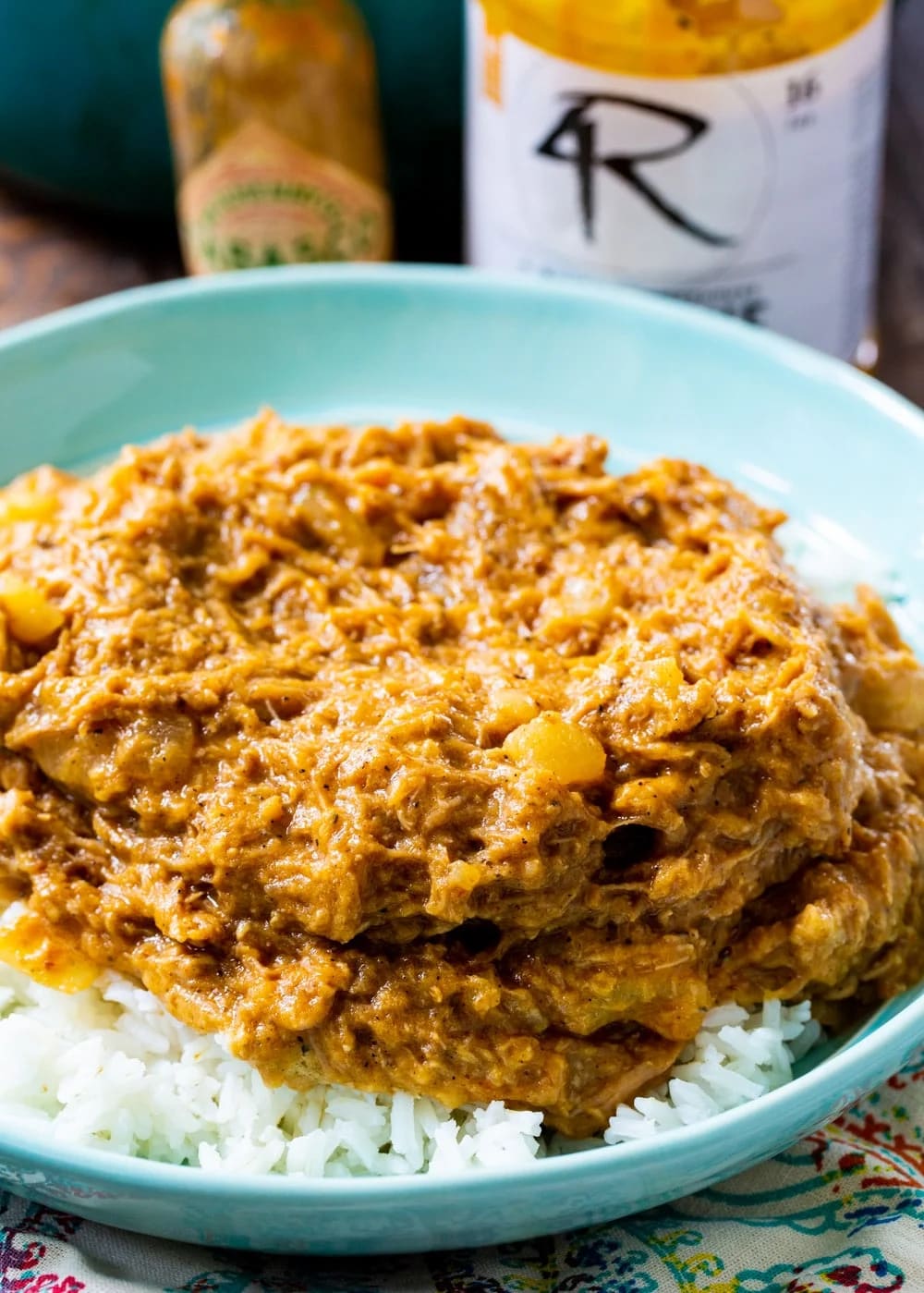
Smart Swaps
- Use half pork and half chicken to lighten the dish while maintaining rich flavor
- Substitute sweet potatoes for regular potatoes to add nutritional variety and a subtle sweetness
- Try stone-ground mustard instead of yellow mustard for a more rustic texture and complex flavor
- For a lower-fat version, use 4 tablespoons butter and 4 tablespoons olive oil instead of all butter
Make It Diabetes-Friendly
- Replace white rice with cauliflower rice (reduces carbs by approximately 30g per serving)
- Substitute half the potatoes with turnips or rutabaga (cuts potato carbs by 50% while maintaining texture)
- Serve smaller portions (1/2 cup hash over 1/3 cup brown rice) to reduce glycemic impact
- Add 1 tablespoon apple cider vinegar to your rice cooking water—studies suggest this may lower the glycemic response
- Pair with non-starchy vegetables like collard greens or cabbage slaw to create a balanced plate that slows carbohydrate absorption
Pro Tips
- For maximum flavor development, make this hash a day ahead—the flavors meld beautifully overnight in the refrigerator
- Save time by asking your butcher to cube the pork shoulder for you
- The consistency should be somewhere between a thick stew and a gravy—if it’s too thick, it won’t spread properly over rice
- Freeze leftover hash in portion-sized containers for up to 3 months—it reheats beautifully for quick weeknight meals
- Traditional South Carolina hash is often served at barbecue restaurants as a side dish, but it makes a fantastic main course when served over rice with pickles on the side